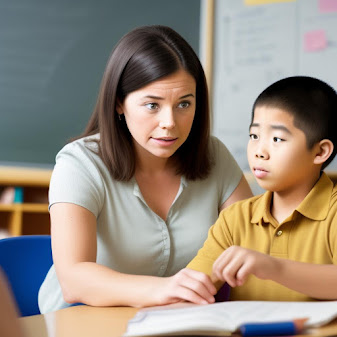Attention Deficit Hyperactivity Disorder (ADHD) is a neurodevelopmental disorder that affects both children and adults. It is characterized by persistent patterns of inattention, hyperactivity, and impulsivity that can significantly impact a person's daily life, including their academic performance. Identifying students with ADHD is essential for providing the support and resources they need to succeed. In this article, we will explore what ADHD is and discuss how to identify students with ADHD.
Educational Info
Thursday, October 19, 2023
Understanding ADHD: Identifying Students with Attention Deficit Hyperactivity Disorder
Attention Deficit Hyperactivity Disorder (ADHD) is a neurodevelopmental disorder that affects both children and adults. It is characterized by persistent patterns of inattention, hyperactivity, and impulsivity that can significantly impact a person's daily life, including their academic performance. Identifying students with ADHD is essential for providing the support and resources they need to succeed. In this article, we will explore what ADHD is and discuss how to identify students with ADHD.
Sunday, October 15, 2023
Unlocking Potential: Strategies to Help Students Overcome Dyslexia
Dyslexia, a common learning disability affecting approximately 1 in 5 individuals, is often misunderstood and stigmatized. It is crucial to recognize that dyslexia is not a sign of low intelligence but a neurobiological condition that affects reading, writing, and spelling abilities. Fortunately, with the right support and strategies, students with dyslexia can overcome these challenges and reach their full potential.
Dyslexia is a lifelong condition characterized by difficulties in accurate and fluent word recognition. People with dyslexia may struggle with decoding words, reading comprehension, and spelling. It is essential to understand that dyslexia is not related to vision problems or lack of motivation; it is a specific difficulty in processing language.
Some of the ways to Help Students with Dyslexia
1. Early Identification: Early intervention is crucial. Identifying dyslexia in children as early as possible allows for timely support. Teachers and parents should be aware of common warning signs, such as difficulty in rhyming, letter recognition, and slow reading progress. Early assessment can lead to tailored interventions.
2. Multisensory Teaching Methods: One of the most effective strategies for helping students with dyslexia is the use of multisensory teaching methods. These methods engage multiple senses, making it easier for students to understand and retain information. For instance, the Orton-Gillingham approach(It emphasizes phonological awareness, teaching students to connect letters with sounds using a systematic and sequential approach) combines visual, auditory, and kinesthetic learning, making it easier for students to connect letters with sounds.
3. Individualized Education Plans (IEPs): Students with dyslexia can benefit greatly from individualized education plans. IEPs outline specific goals, accommodations, and teaching methods tailored to each student's unique needs. These plans ensure that students receive the support they require to succeed academically.
4. Assistive Technology: Advancements in technology have provided a wealth of tools to aid dyslexic students. Text-to-speech software, speech recognition software, and audiobooks can be invaluable resources. These tools make reading and writing more accessible and less frustrating for students with dyslexia.
5. Reading Interventions: Reading interventions, such as the Wilson Reading System(It teaches phonemic awareness, decoding, and encoding skills, focusing on the fundamentals of reading and spelling through a multisensory approach, making it easier for learners to grasp these essential skills and improve their reading abilities) and the Lindamood-Bell programs(They help learners, including those with dyslexia, by teaching them to visualize and verbalize words and sentences, enhancing their ability to understand and remember what they read or hear.)can significantly improve reading skills in dyslexic students. These programs offer structured, systematic, and sequential instruction, which is essential for dyslexic learners.
6. Encourage a Growth Mindset: It is crucial to promote a growth mindset in students with dyslexia. Encourage them to view their challenges as opportunities for growth and improvement. Emphasize that intelligence is not fixed, and with effort and the right strategies, they can achieve their goals.
7. Supportive Environment: Create a supportive and inclusive classroom environment where students with dyslexia feel comfortable and accepted. Encourage peer support and foster a sense of belonging. Reducing anxiety and building self-esteem can significantly impact a student's success.
8. Encourage Reading for Enjoyment: Reading should be enjoyable, not just a task. Encourage dyslexic students to explore audiobooks, graphic novels, and other alternative reading materials that interest them. This can help foster a love for reading and learning.
Dyslexia is a challenge, but it should not be a barrier to a student's success. With the right strategies and support, students with dyslexia can overcome their difficulties and thrive academically. Early identification, multisensory teaching methods, individualized education plans, assistive technology, and a growth mindset are key components in helping students with dyslexia. It is essential to foster a supportive environment and encourage a love for reading. By working together, educators, parents, and students can unlock the potential of those with dyslexia, allowing them to achieve their dreams and excel in their academic pursuits.
- Puspo Raya Chettry

